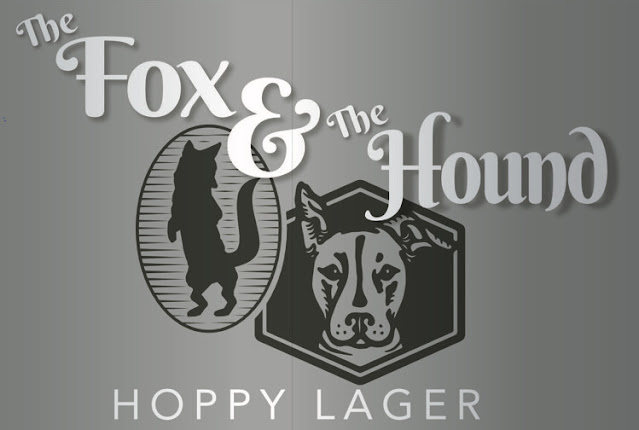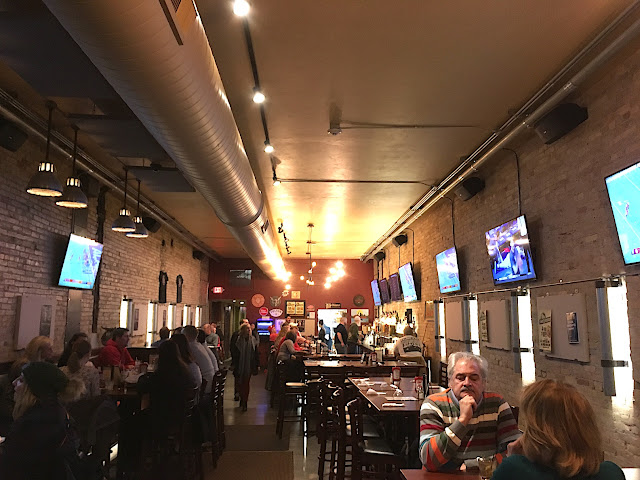With the launch of Fox River Brewing in 1995, ale brewing supplanted Oshkosh's history as a center for lager-beer production. The difference between the two families of beer comes down to yeast, time, and flavor.
Ale is fermented with yeast that prefers warm temperatures; usually around 66º Fahrenheit. Ale is a quick brew often going from kettle to glass in 14 days or less. The process tends to produce a beer with a fruitier flavor profile. Lager, on the other hand, is made with yeast that thrives in a cooler environment; about 50º Fahrenheit. After fermentation, a lager is typically matured for a month or more at temperatures close to freezing. It leads to a beer with a “cleaner” taste allowing the more subtle aspects of the ingredients to shine through.
Lagers have earned a reputation for being more difficult to brew. That's one of the reasons it tends to be ignored by craft breweries. But that's beginning to change. According to Nielsen, a market research firm, the production of craft lagers grew by more than 9% last year, making it among the fastest-growing segments of the beer market. The primary contributors in Oshkosh to that increase have been Bare Bones Brewery and Fox River Brewing.
This month, the two breweries will underscore the trend with the release of a collaboration beer named The Fox and the Hound, a golden-hued, hop-forward lager that will be available at the taprooms of both breweries. For Drew Roth, head brewer at Fox River, and Jody Cleveland, head brewer at Bare Bones, the beer presents an opportunity to demonstrate how compelling a good lager can be.
Lagers have earned a reputation for being more difficult to brew. That's one of the reasons it tends to be ignored by craft breweries. But that's beginning to change. According to Nielsen, a market research firm, the production of craft lagers grew by more than 9% last year, making it among the fastest-growing segments of the beer market. The primary contributors in Oshkosh to that increase have been Bare Bones Brewery and Fox River Brewing.
This month, the two breweries will underscore the trend with the release of a collaboration beer named The Fox and the Hound, a golden-hued, hop-forward lager that will be available at the taprooms of both breweries. For Drew Roth, head brewer at Fox River, and Jody Cleveland, head brewer at Bare Bones, the beer presents an opportunity to demonstrate how compelling a good lager can be.
"I think there's an expectation that lager is just one thing," says Cleveland. "A lot of customers think of it as something that's always light and not very flavorful. It's nice to show that this type of beer can be more than that."
Roth says that at Fox River, that realization is already taking place. "Our customer base is one that still very much gravitates towards darker beers and they tend to understand that a beer like our Oktoberfest is a lager," he says. "So, there's already some knowledge among our customers that lager doesn't necessarily have to be fizzy, yellow beer."
 |
| Drew Roth (on the left in dark shirt) and Jody Cleveland brewing The Fox and the Hound. |
Cleveland and Roth took a decidedly craft-beer approach when they developed the recipe for The Fox and the Hound. It's an all-malt beer brewed with American malts and Grungeist hops, a proprietary hop grown in Germany. A post-fermentation "dry-hop" addition was used to highlight the notes of peach and passion fruit that Grungiest brings. It's a technique not usually associated with lager-beer brewing.
"We've learned that we really like to dry hop our lagers," Roth says "A little bit of dry hop goes a long way in this sort of beer and it really does amp it up a notch." The approach may be somewhat novel, but it's indicative of the evolution of lager brewing here. Both Roth and Cleveland began their careers brewing ales. That background informs their approach to making lager beers.
"I did not even like lager beer for a long time," says Roth. "I went into craft beer as an IPA hop head. At the time it was really hard to find good lagers. It wasn't until I was in Eau Claire and had Lazy Monk's beer that I started thinking, alright this is pretty good. After that, I went back to homebrewing for a while and immediately started brewing lagers."
Cleveland followed a similar path. "When I started homebrewing, all I wanted to brew was brown ale," he says. "But gradually I started doing lagers and then ended up brewing it quite a bit, mostly historic styles and beers that had been brewed in Oshkosh before craft came along. Now, it's my favorite type of beer, so I would prefer to brew that."
At Bare Bones, Cleveland makes the only year-round lager produced in Oshkosh. The brewery's Oshkosh Lager is an homage to the sort of lagers that were widely produced in Oshkosh for most of the 20th century. "The fact that these beers are selling well helps me justify brewing more of it," Cleveland says.
Roth shares that view. "I mean you have to brew what sells," he says, "and right now the lager beers are selling, so we're going to continue making them. I personally like them a lot, so I'm not disappointed about brewing more of them."



















